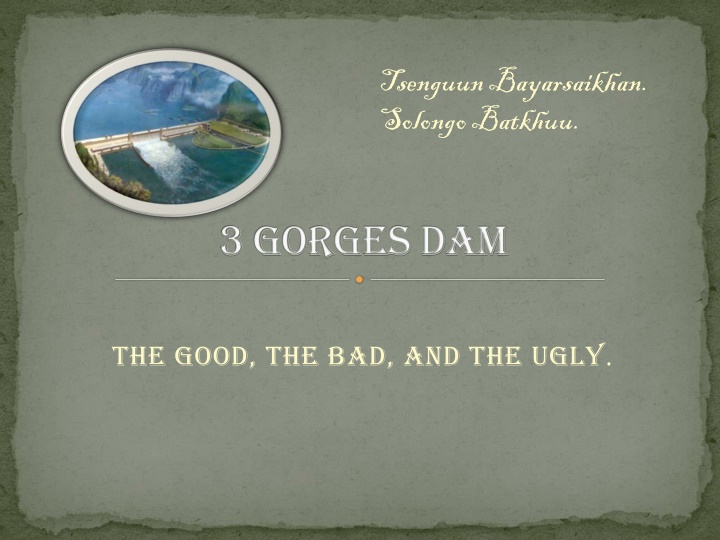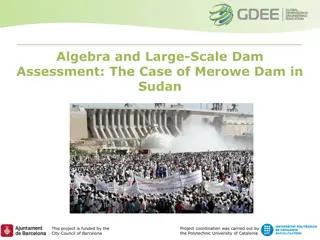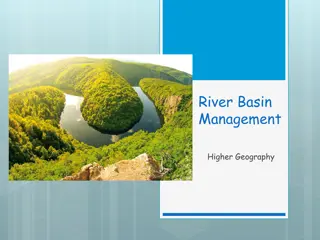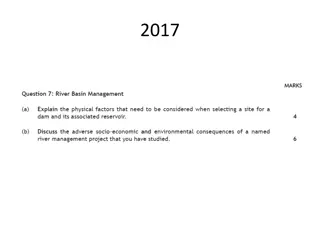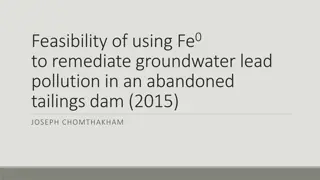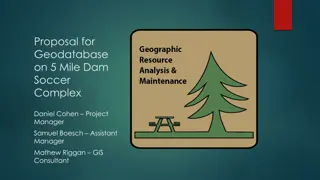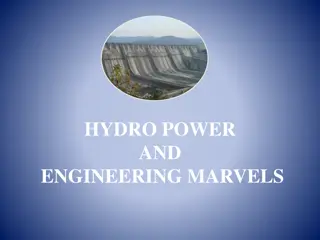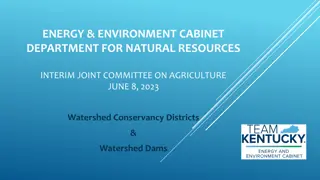Three Gorges Dam: The Good, the Bad, and the Ugly
The Three Gorges Dam, a monumental hydroelectric project in China, presents a complex picture with its massive energy generation potential and significant social and environmental impacts. Built to address China's energy demands, the dam has impressive statistics in terms of capacity and electricity generation. However, its construction also led to the displacement of millions of people, submerging towns, villages, and cultural relics. The project faces criticism for its social costs, environmental consequences, and disruption of local communities.
Download Presentation

Please find below an Image/Link to download the presentation.
The content on the website is provided AS IS for your information and personal use only. It may not be sold, licensed, or shared on other websites without obtaining consent from the author.If you encounter any issues during the download, it is possible that the publisher has removed the file from their server.
You are allowed to download the files provided on this website for personal or commercial use, subject to the condition that they are used lawfully. All files are the property of their respective owners.
The content on the website is provided AS IS for your information and personal use only. It may not be sold, licensed, or shared on other websites without obtaining consent from the author.
E N D
Presentation Transcript
Tsenguun Bayarsaikhan. Solongo Batkhuu. 3 Gorges Dam The good, the bad, and the ugly.
History. First conceived by Sun Yat-sen in 1919. In 1932, led by Chiang Kai-shek, began preliminary work on plans for a dam in the Three Gorges. Mao Zedong supported the project but it was delayed because of work on a different dam. During the 1980s, plans were revived and was approved by the National People s Congress in 1992. The construction started on December 14, 1994. It was expected to be fully operational in 2009, but due to additional projects, the dam is not expected to become fully operational until about 2011.
Dam-it. The Three Gorges Dam is the world s largest hydroelectric power station by total capacity at 22,500 MW. It will have 34 generators: 32 will be main generators, each with a capacity of 700 MW, and the other two will be plant power generators, each with capacity of 50 MW. After completion, the expected annual electricity generation will be over 100 TWh, 18% more than the originally predicted 84.7 TWh.
Info. 7661 ft long 607 ft tall The wall is 377 ft thick on the bottom and 131.2 ft thick on top. Water level is maximum at 175 meters over sea level, 110 meters above the river level downstream. The reservoir created by the Three Gorges Dam is about 410 mi in length and 0.70 mi in width on average, and contains 31,900,000 acre ft of water. Cost recovery is expected to occur ten years after the dam starts full operation
Ingredients About 30 billion dollars. 27 million cubic meters of concrete (x8 as much as has been poured into the Hoover dam and x2 the amount of concrete in the Itaip dam). Engineered to store over 5 trillion gallons of water and to withstand an earthquake of 7.0 on the Richter scale.
The good. The power will help meet China's rapidly growing energy demand. The dam will generate 18,000 watts of power equal to 15 nuclear power plant. Power generation potential is the energy equivalent of burning 50 million tons of coal or 25 million tons of crude oil. The freshwater storage capacity has skyrocketed from 0.06 cubic kilometers in 1950 to 180 cubic kilometers in 2002. The reservoir will allow 10,000-ton freighters to enter the nation's interior. Great tourist attraction.
The Bad. 1.5-2 million people in have to be evacuated. 115 towns, 4,500 villages, 4,000 hospitals and clinics, 40,000 tombs, 100 bridges and 2.87 million tons of garbage will be submerged. 1,087 ancient relics are to be moved. $7-10 a month as compensation. (barely enough for rice ) One billion tons of industrial and human waste are projected to flow into the reservoir. At least 30 million tons of industrial solid waste have already piled up on the banks of the river. Over 1,600 factories and abandoned mines will be submerged releasing countless amounts of toxins.
Changes in the 3 Gorges Dam Video Courtesy of YouTube. (
International Relations. Many different countries and their banks are invested in the dam. The turbines and other main parts are manufactured by companies such as GE. Chinese dam builders have learned and are well crafted in building dams, and plan to sell their ideas and expertise to other countries.
The ugly Over 265 billion gallons of raw sewage are dumped into the Yangtze annually. Originally built to control flooding yet some hydrologists say that by trapping silt, the dam could actually make downstream riverbanks more vulnerable to flooding. The Baiji dolphin, the ancient river sturgeon and the finless porpoise depend on the Yangtze for their survival The population of Siberian cranes in Poyang Lake will also be affected by the dam. The sediment accumulation will drastically erode the wetland of the Yangtze.
The animals that are greatly affected. Finless Porpoise Baiji Dolphin Considered ENDANGERED in China EXTINCT Siberian Crane 98% of the population is threatened
Sources. http://www.ohiostatealumni.org/resources/travel/Pub lishingImages/Three_Gorges_Dam.jpg http://www.cubaheadlines.com/files/cubaheadlines.c om/imagenes/video-tv.png http://www.worsleyschool.net/science/files/giant/da m.html http://www.time.com/time/world/article/0,8599,16710 00,00.html http://www.pbs.org/itvs/greatwall/dam1.html http://www.eoearth.org/article/Three_Gorges_Dam,_ China
http://www.lifeinthefastlane.ca/wp- content/uploads/2007/08/baiji_dolphin_1b1.jpg http://dsc.discovery.com/news/2006/11/16/gallery/finl essdolphin_zoom.jpg http://newsimg.bbc.co.uk/media/images/41665000/gif /_41665118_3_gorges_dam_416.gif
